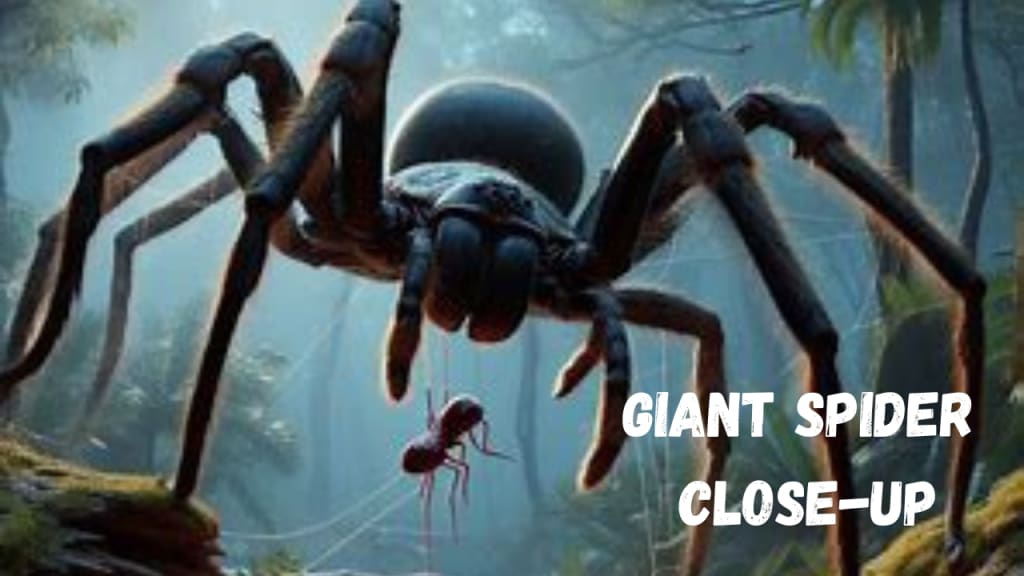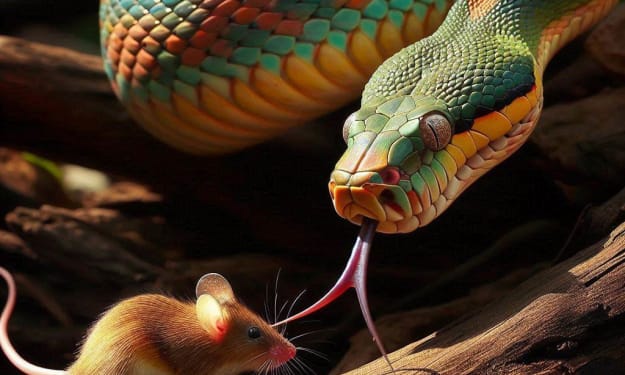Arachnid Assassins: A Glimpse into the World's Most Dangerous Spiders
Dangerous Spiders

Introduction
Spiders, those eight-legged creatures that often evoke both fascination and fear, are a vital part of our planet's diverse ecosystems. From the intricate webs of orb weavers to the stealthy hunts of wandering spiders, their world is as captivating as it is often misunderstood.
But amidst the beauty and wonder of the arachnid realm, there exist a select few spiders whose venom can pose a serious threat to humans, earning them the title of "most dangerous. Click here to watch the video!!
This article takes a deep dive into the fascinating, and sometimes frightening, world of these arachnid assassins, exploring their unique characteristics, deadly venom, and the impact they have on both humans and their respective environments.
The Brazilian Wandering Spider: A Nomadic Assassin
Our journey begins in the lush rainforests of the Amazon, where the Brazilian wandering spider (Phoneutria fera), also known as the banana spider, roams freely.
Unlike its web-building relatives, this predator prefers a more active approach to hunting, stalking its prey through the intricate undergrowth. Its nomadic nature, however, doesn't mean it's lost; rather, it's a reflection of its adaptable hunting strategy.
The wandering spider's venom is highly potent, containing a cocktail of neurotoxins that can paralyze and kill. While its primary prey consists of insects and smaller invertebrates, its venom can pose a significant threat to humans.
This spider is known for its aggressive nature, especially when defending its territory, and has earned a reputation as one of the most dangerous spiders in the world. Click here to watch the video!!
The Sydney Funnel-Web Spider: Master Weaver of Deadly Traps
From the steamy jungles of South America, we journey to the sun-drenched continent of Australia, home to the infamous Sydney funnel-web spider (Atrax robustus).
This creature is as fascinating as it is formidable, a master weaver of silk traps. Its funnel-shaped webs, often spun in cool, damp places, are a testament to its ingenuity and serve as deadly traps for unsuspecting prey.
The Sydney funnel-web spider's venom is highly toxic, containing a potent neurotoxin that can rapidly incapacitate its prey. It's known for its aggressive nature, particularly when defending its territory.
While its venom can cause serious harm to humans, antivenom is available, reducing the risk of fatality with prompt treatment.
The Chilean Recluse Spider: A Master of Disguise and Silent Danger
The Chilean recluse spider (Loxosceles laeta) prefers the shadows, blending seamlessly into its surroundings. This master of disguise is often unnoticed until it's too late. Its venom is not as quick-acting as that of the wandering spider or the funnel-web, but it's incredibly potent.
The Chilean recluse's venom is known for its necrotic properties. Once injected, it begins to destroy surrounding cells and tissues, leading to a condition called necrosis. The affected area can transform into a gruesome wound, often requiring extensive medical treatment.
The Redback Spider: A Symbol of Venomous Beauty
Australia's sunburnt landscapes are also home to the redback spider (Latrodectus hasselti), a creature whose reputation for toxicity precedes it. The female redback, easily identified by her distinctive black body and prominent red stripe, symbolizes the intricate relationship between beauty and danger.
The redback's venom is highly potent, containing a complex cocktail of neurotoxins that paralyze and subdue prey, primarily insects. While its venom can cause significant pain and muscle spasms in humans, fatalities are relatively rare due to the availability of antivenom.
The Black Widow Spider: A Legendary Arachnid Assassin
Our journey through the world's most dangerous spiders concludes in the United States, where the black widow spider (Latrodectus mactans) is a legendary arachnid assassin. This creature, often found in grasslands and abandoned buildings, has a reputation for its potent venom.
The black widow's venom, like that of the redback, is known for its neurotoxic effects. Once injected, it can cause intense pain, muscle spasms, and nausea, leading to a cascade of agonizing symptoms. The black widow's venom, however, is also less potent than some of its counterparts, and fatalities are relatively uncommon.
Click here to watch the video!!
The Role of Spiders in Ecosystems
Despite their reputation for being dangerous, spiders play a vital role in their respective ecosystems. They are important predators, keeping insect populations in check and contributing to the delicate balance of nature.
Conclusion
The world of spiders is a fascinating and complex one, filled with both beauty and danger. While it's important to be aware of the potential threats posed by these arachnid assassins, we should also appreciate the vital role they play in our planet's ecosystems.
By understanding their unique characteristics and habits, we can learn to coexist with these creatures, fostering a healthy respect for the wonders of the natural world.
Remember, a safe distance and a keen eye for these creatures will help you avoid any unpleasant encounters, allowing you to marvel at their incredible adaptations and appreciate their vital role in maintaining a healthy environment.
About the Creator
Ahmed Bahaa Eldin Mohamed
Get Ready for the Smart Revolution with Technology for Smart Sphere's Expert Analysis. You will know all about the latest Insights on Smart Technology
Enjoyed the story? Support the Creator.
Subscribe for free to receive all their stories in your feed. You could also pledge your support or give them a one-off tip, letting them know you appreciate their work.






Comments
There are no comments for this story
Be the first to respond and start the conversation.